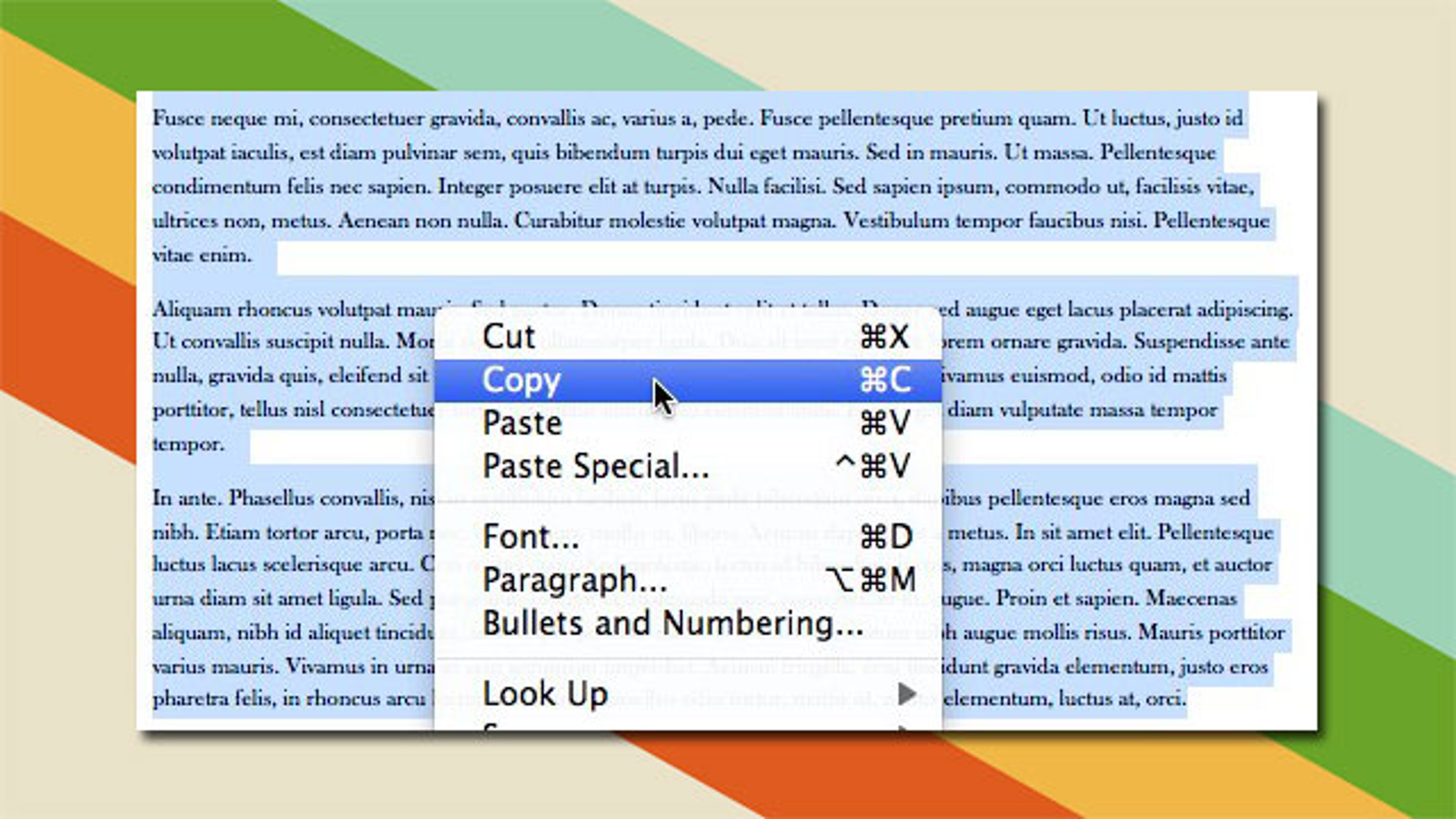
In 1983, the Apple Lisa became the first text editing system to call that temporary location "the clipboard".Įarlier control schemes such as NLS used a verb-object command structure, where the command name was provided first and the object to be copied or moved was second. Often this was done with a "move" command, but some text editors required that the text be first put into some temporary location for later retrieval/placement. Since moving a region of text requires first removing it from its initial location and then inserting it into its new location, various schemes had to be invented to allow for this multi-step process to be specified by the user. The earliest editors (designed for teleprinter terminals) provided keyboard commands to delineate a contiguous region of text, then delete or move it. This mechanism was often used to transfer frequently-used commands or text snippets from additional buffers into the document, as was the case with the QED text editor. As soon as computer data entry moved from punch-cards to online files (in the mid/late 1960s) there were "commands" for accomplishing this operation. The act of copying/transferring text from one part of a computer-based document (" buffer") to a different location within the same or different computer-based document was a part of the earliest on-line computer editors. The advent of photocopiers made the practice easier and more flexible. Stationery stores sold "editing scissors" with blades long enough to cut an 8½"-wide page.

This practice remained standard into the 1980s. The term " cut and paste" comes from the traditional practice in manuscript-editings whereby people would cut paragraphs from a page with scissors and paste them onto another page. 7 Additional differences between moving and copying.Terms like cloning, copy forward, carry forward, or re-use refer to the dissemination of such information through documents, and may be subject to regulation by administrative bodies. The capability to replicate information with ease, changing it between contexts and applications, involves privacy concerns because of the risks of disclosure when handling sensitive information. Typically, clipboard support is provided by an operating system as part of its GUI and widget toolkit. This interaction technique has close associations with related techniques in graphical user interfaces (GUIs) that use pointing devices such as a computer mouse (by drag and drop, for example). The command names are an interface metaphor based on the physical procedure used in manuscript editing to create a page layout. The data remains available to any application supporting the feature, thus allowing easy data transfer between applications. The data from the clipboard is later inserted wherever a paste command is issued. The cut command removes the selected data from its original position, while the copy command creates a duplicate in both cases the selected data is kept in temporary storage (the clipboard). Copy and paste cannot be performed on copy-protected articles or websites.In human–computer interaction and user interface design, cut, copy, and paste are related commands that offer an interprocess communication technique for transferring data through a computer's user interface. However the copy and paste command can raise privacy concerns, especially when handling sensitive data. It does not lead to data loss, but rather creates a duplicate in the specified location. Unlike the cut and paste action, copy and paste is not destructive in nature. It serves as a useful option for many users and can save time and effort. These actions can also be done with the help of a mouse.įrequent use of copy and paste operations are done in computer-based editing.
#Copy and paste it windows
In Windows and Macintosh-based computers, the key combinations of Ctrl and "C" produces the copy effect whereas the key combination of Ctrl and "V" produces the paste effect. There are many applications which support copy and paste operations, often with key combinations, toolbar options, pulldown menus or pop-up menus. Apple Lisa is the first text editing system that introduced the concept of a clipboard. When the paste command is issued, the data from the clipboard is passed to the specific position. Similar to the cut and paste technique, the copy action selects the data and stores it in a temporary location often known as the clipboard, which is usually invisible to the user.


 0 kommentar(er)
0 kommentar(er)
